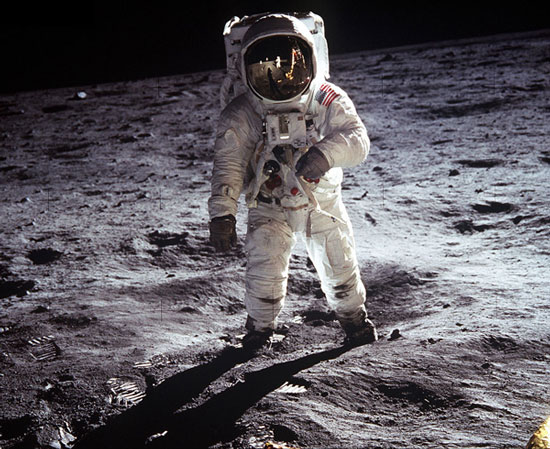Man and the moon
Four decades have passed since the US ended the Apollo program, no astronauts were sent to the moon, but the "debt" between people and this object is still salty.
Journey for thousands of years
Legend of Neil Armstrong died at the age of 82. The whole world had the opportunity to recall July 21, 1969 and the historic moment when he became the first person to set foot on the moon. This event and the entire Apollo program of the United States (from 1961-1975) is the point of the human journey to conquer the earth's only natural satellite. This is a long journey, originating many thousands of years ago and will not stop.
The moon directly affects life on the earth because it is the 'focal point' for a series of natural phenomena such as tides, crops, 24-hour days . But long before science developed enough to make convincing explanation for these phenomena, the platelets are very familiar with humans. According to the L'Express newspaper, among the old Stone Age drawings dating back over 17,000 years in the Lascaux cave (southwestern France), there are a series of strange little dots. Many archaeologists think that this is a simple 'calendar', which records time by tracking the moon.

In the future, astronauts will be sent to the face again
moon to continue to discover the secret of this celestial body
From the dawn of these civilizations to the vertical of human history, the moon is always present 'on every kilometer' , from culture, beliefs, religion to science . Ancient Greeks great is always impressed that this object is very close, only 'about a throw of javelin'. And when science developed, enabling astronauts to travel outside the earth's scope, the first discovery goal was also the moon.
Mission Apollo
The NASA Space Agency's Apollo moon exploration program has brought a total of 12 astronauts to this celestial body. Since Neil Armstrong's 11th Apollo 11 historic mission, NASA has at least 1 sender to the moon every year, with almost unchanged duties: installing technical equipment and . gravel gathering. . Through the Apollo program, NASA collected a total of 384kg of gravel. So far, scientists have only analyzed 10% of this number but have been the basis for 90% of knowledge related to the moon.
For example, the hypothesis that the moon formed from many fragments of meteorites was removed when among the stones that astronauts brought home many pieces of anorthosite, which were formed from light minerals. Much aluminum on the surface of the lava 'sea' giant. Scientists believe that a large source of energy to create this lava is more likely to come from a large collision about 50 million years after the formation of the solar system and this could also be the origin of the face. moon.
Moreover, many astronomers argue that microscopic platelets are really the door to the vast universe for humans. New Scientist newspaper quoted geology expert Paul Spudis of the Houston Space Research Institute (US) to reveal the findings from about 2,000 pieces of rock collected in the Apollo program, scientists had to reconsider set of theories about the formation and development of planets.
After the American Apollo program, no astronauts were sent to the moon anymore, but instead were self-propelled exploration robots. Modern technical devices, together with samples collected 40 years ago, continue to reveal the secret of this celestial body. Continuously in 2010 and 2011, many new studies have confirmed the theory that the moon contains water. In 2010, NASA's LCROSS probe robot showed many signs of water at the southern tip of the moon. In the middle of last year, the PNAS specialist published the work of American and Japanese scientists from the Carnegie Institute of Science in Washington about the fact that this object also contains water. This work is the result of the analysis of apatite particles in stone samples brought back from the moon during the Apollo mission.
- Does the Moon have its own moon? And you will be surprised with its name!
- What is super moon? When will Vietnam receive Super Moon?
- Interesting things few people know about the Moon
- New NASA research: Water and humans can be found on the Moon, so come back soon
- Official: Americans will return to the Moon
- At the time of dinosaurs, volcanoes on the Moon used to work?
- Why is the Mid-Autumn Moon bigger and redder?
- NASA revealed the time of the first immigration settlement on the Moon
- Scientists confirm that ice exists on the Moon
- Full Moon facts - Full moon you may not know yet
- Photo: Manually watch the biggest moon in 20 years
- Secrets of strange land on the Moon
 Van Allen's belt and evidence that the Apollo 11 mission to the Moon was myth
Van Allen's belt and evidence that the Apollo 11 mission to the Moon was myth The levels of civilization in the universe (Kardashev scale)
The levels of civilization in the universe (Kardashev scale) Today Mars, the sun and the Earth are aligned
Today Mars, the sun and the Earth are aligned The Amazon owner announced a secret plan to build a space base for thousands of people
The Amazon owner announced a secret plan to build a space base for thousands of people